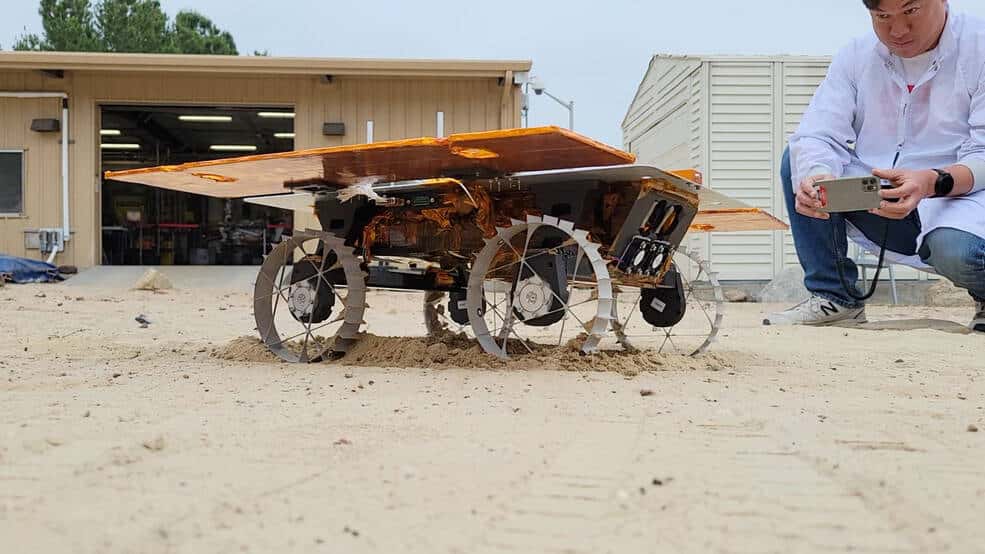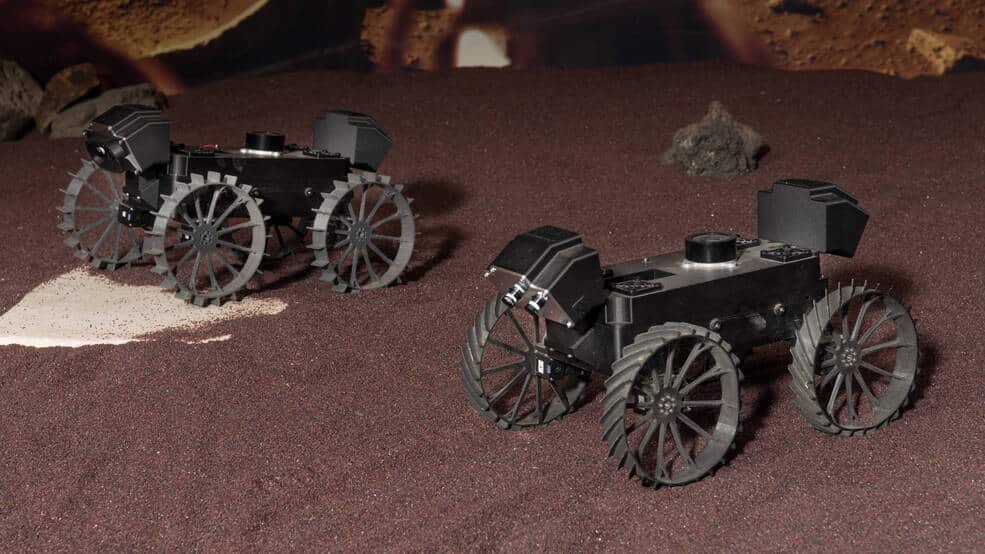
Five decades after the last Apollo mission, NASA is ready to send astronauts back to the Moon. The Artemis mission, as it’s known, is expected to put astronauts’ boots back on the lunar surface by 2025. And, unlike previous missions, the plan is to go to the Moon and stay there for good by establishing a permanent base camp.
But when the first Artemis astronauts finally touch down on the Moon — which will include the first female astronaut and the first astronaut of color to join the exclusive moonwalking club — they won’t be alone. A group of three autonomous mini-rovers will be waiting for them. NASA has now offered more juicy details on why these rovers could be a big deal for space flight.
These three exploratory robots, collectively referred to as CADRE (Cooperative Autonomous Distributed Robotic Exploration), are currently in their engineering prototype phase. NASA’s plan is to deploy CADRE in 2024 through the Commercial Lunar Payload Services (CLPS) program. Each rover is no larger than a suitcase.
“Our mission is to demonstrate that a network of mobile robots can cooperate to accomplish a task without human intervention — autonomously,” said Jet Propulsion Laboratory CADRE project manager Subha Comandur.

While intricate rovers like Perseverance on Mars require meticulously calculated instructions for every movement, the CADRE robots are programmed to function autonomously. NASA will only instruct the robots to focus their stereo mapping cameras on specific landscape areas, and from there, the robots will take charge. Although the mission managers won’t be micromanaging their actions, they will monitor the robots through a base station camera mounted on the lander.
“The only instruction is, for example, ‘Go explore this region,’ and the rovers figure out everything else: when they’ll do the driving, what path they’ll take, how they’ll maneuver around local hazards,” said CADRE principal investigator Jean-Pierre de la Croix.
Touchdown is scheduled in the Reiner Gamma region of the Moon. Once there, the mini rovers will face their first challenge: maneuvering in formation while detecting and circumventing obstacles on the lunar surface. Equipped with advanced sensors, they will collaboratively navigate the moon’s rugged terrain. A camera situated on the lander will keep a watchful eye on the rovers as they diligently carry out their tasks.
Another challenge the rovers will need to overcome is the blistering heat. Temperatures in the sunlit Reiner Gamma region can exceed 114 degrees Celsius (237 degrees Fahrenheit), which is why the mini-rovers will be allowed to operate only in 30-minute cycles. After each cycle, the robots will spend 30 minutes expelling heat through radiators while recharging their batteries using solar panels. Once awake, the rovers will elect a new leader that will lead the trio and continue their self-directed exploration.
NASA envisions that the insights gained from this lunar mission could lay the foundation for upcoming human space exploration endeavors. The simultaneous data collection from various vantage points could potentially usher in new scientific insights or offer valuable support to astronauts during their lunar missions.






